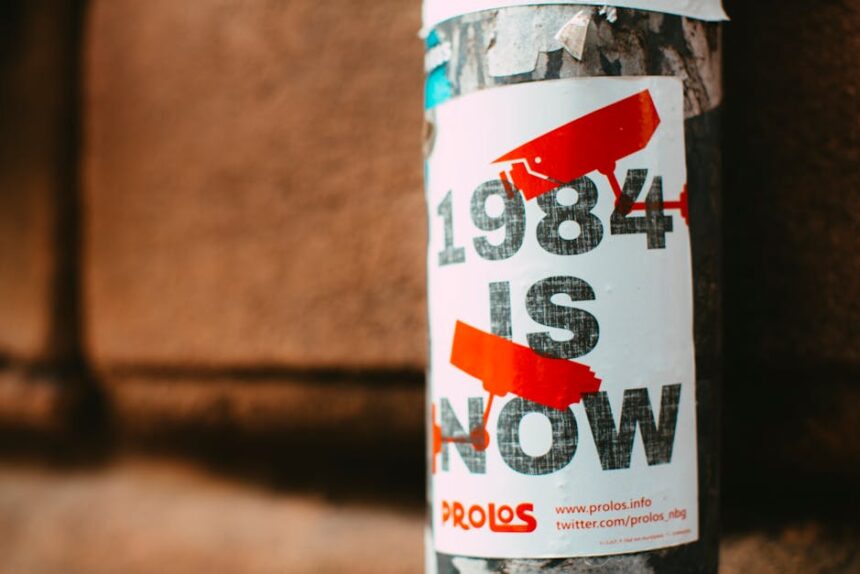The effectiveness of any Twitter Ads campaign hinges significantly on its bidding strategy. Far from a simple “set it and forget it” task, precision bidding involves a nuanced understanding of Twitter’s auction dynamics, campaign objectives, audience behavior, and the interplay of various bid types. Mastering these strategies can dramatically improve Return on Ad Spend (ROAS), lower Cost Per Acquisition (CPA), and ensure efficient budget utilization. This comprehensive guide dissects advanced bidding methodologies, providing actionable insights for advertisers seeking to maximize their performance on the Twitter platform.
Understanding Twitter’s Ad Auction System
At the heart of precision bidding lies a thorough grasp of how Twitter’s ad auction operates. Unlike a traditional auction where the highest bidder always wins, Twitter’s system is a second-price auction influenced by an ad’s “quality score.” When an ad impression becomes available, Twitter identifies eligible ads based on targeting criteria. These ads then compete in an auction where the winning ad is determined not just by the bid amount but also by its predicted relevance and engagement for the user, as well as the advertiser’s chosen objective.
Factors Influencing Auction Win Rate:
- Bid Amount: This is the most direct signal of an advertiser’s willingness to pay. A higher bid generally increases the likelihood of winning an impression, assuming other factors are equal.
- Expected Action Rate: Twitter’s algorithm predicts how likely a user is to perform the desired action (e.g., a click, a follow, a conversion) based on historical data, ad creative, and audience characteristics. Ads with a higher expected action rate are favored.
- Ad Quality and Relevance: This encompasses several metrics including historical engagement rates (CTR, likes, retweets, replies), creative freshness, and relevance to the user’s interests. High-quality, relevant ads receive a “boost” in the auction.
- Campaign Objective: Twitter’s algorithm optimizes delivery based on the selected objective. For example, a campaign optimized for website clicks will favor users likely to click, even if their engagement with the tweet itself is lower.
- Audience Competition: The number of other advertisers targeting the same audience segment directly impacts bid prices. Highly contested audiences will naturally command higher bids.
By optimizing all these factors, advertisers can achieve a higher “effective bid” – the true value Twitter assigns to their ad in the auction – even with a lower monetary bid, thereby enhancing bidding efficiency.
Core Bidding Types: Automatic, Target Cost, and Max Bid
Twitter Ads offers three primary bidding strategies, each suited for different campaign goals and levels of control. Selecting the right one is the foundational step in precision bidding.
1. Automatic Bidding: The Simplicity Catalyst
Mechanism: With Automatic Bidding, Twitter’s algorithm automatically adjusts bids in real-time to get the most results for the lowest price within your budget. Advertisers specify a budget, and Twitter’s system optimizes delivery to maximize the chosen objective (e.g., website clicks, app installs, followers) within that budget.
When to Use It:
- Beginners: Ideal for advertisers new to Twitter Ads or those less familiar with complex bidding strategies.
- Testing: Excellent for initial campaign testing (audiences, creatives) to understand baseline performance before refining bids.
- Broad Reach & Awareness: When the primary goal is to maximize impressions or reach within a budget, without a strict CPA target.
- Volatile Performance: If historical data is limited or unpredictable, allowing Twitter’s algorithm to learn and adapt can be beneficial.
Advantages:
- Simplicity: Minimal manual intervention required, allowing advertisers to focus on creative and targeting.
- Optimization by Twitter: Leverages Twitter’s vast data and machine learning capabilities to find the most efficient bids.
- Budget Efficiency (within its scope): Aims to get the most results for the budget, though not necessarily the lowest specific CPA.
- Flexibility: Adapts to changing auction dynamics automatically.
Disadvantages:
- Less Control: Advertisers have limited direct control over the specific cost per action. You might pay more for an action than you’d prefer if the auction is highly competitive.
- Potential for Overspend (per action): While efficient overall, individual actions might cost more than anticipated in certain scenarios.
- Lack of Specificity: Doesn’t allow for targeting a precise CPA, which can be crucial for ROI-driven campaigns.
Best Practices for Automatic Bidding:
- Set Realistic Budgets: Ensure your daily or total budget is sufficient to allow Twitter’s algorithm to explore and optimize. Too small a budget can limit learning.
- Strong Creative and Targeting: Even with automatic bidding, high-quality creatives and precise audience targeting are paramount. These factors significantly influence the “effective bid” and overall campaign efficiency.
- Monitor Performance Closely: Despite automation, regularly review metrics like CPA, CPC, and conversion rates. If costs are too high, consider switching to a more controlled bidding strategy or refining targeting/creative.
- Allow for Learning Phase: Give automatic bidding campaigns sufficient time (at least 3-5 days with adequate budget) to allow Twitter’s algorithm to learn and optimize performance.
- A/B Test Variables: While the bid is automated, A/B test different ad creatives, audiences, and landing pages to find the most effective combinations that Twitter can then optimize around.
2. Target Cost Bidding: Balancing Cost and Delivery
Mechanism: Target Cost bidding allows advertisers to set a specific average cost they want to achieve per billable action (e.g., per app install, per conversion). Twitter’s algorithm then optimizes bids to maintain this average cost, even if individual bids fluctuate above or below the target. The system aims to deliver as many results as possible while staying close to the specified target cost over the campaign’s lifetime.
When to Use It:
- Performance-Driven Campaigns: Ideal for campaigns with clear CPA/CPI/CPC targets where ROI is a primary concern.
- Stable Campaigns: Works best when you have historical data and a good understanding of your desired cost per action.
- Scalability with Cost Control: When you want to scale ad spend while maintaining a predictable cost per result.
Advantages:
- Cost Predictability: Provides a relatively stable average cost per result, making budgeting and ROI calculations more straightforward.
- Efficiency: Aims to deliver results at your desired cost, preventing overspending on individual actions.
- Scalability: Allows you to increase budget without necessarily increasing the cost per result, provided the target cost is achievable within the market.
Disadvantages:
- Potential for Under-Delivery: If the set target cost is too low (below market rates or what Twitter’s algorithm deems achievable), the campaign may struggle to spend its budget or deliver results.
- Rigidity: Less adaptable to sudden changes in auction competition if the target cost is not adjusted.
- Requires Historical Data: Optimal performance often relies on accurate historical CPA data to set an achievable target.
Setting the “Target Cost” Effectively:
- Analyze Historical Data: Review past campaign performance (from Twitter Ads or other platforms) to determine a realistic average CPA for your desired action.
- Consider Industry Benchmarks: Research average CPA/CPIs for your industry to understand competitive pricing.
- Start Slightly Higher: When launching a new campaign or entering a new market, consider starting with a target cost slightly higher than your ideal to ensure delivery. You can gradually lower it once the campaign gains momentum and data.
- A/B Test Target Costs: Run experiments with different target costs to find the sweet spot between delivery volume and cost efficiency.
- Factor in Lifetime Value (LTV): Understand the LTV of a conversion. This insight helps determine the maximum profitable CPA you can afford. Your target cost should always be below this LTV.
Monitoring and Adjusting Target Cost Bids:
- Daily Review: Check daily spend and cost per result. If costs are consistently above or below target, consider adjustments.
- Under-Delivery: If your campaign is not spending its budget, your target cost might be too low. Increase it incrementally (e.g., by 5-10%) and observe the impact.
- Over-Delivery/High Cost: If you’re spending too much or the cost is higher than desired, your target might be too high. Decrease it gradually. However, be cautious; drastically lowering the target can severely restrict delivery.
- Competitive Pressure: Monitor auction insights if available. Increased competition can necessitate a higher target cost to remain competitive.
- Audience Size: A very narrow audience might make it difficult for Twitter to find users at your target cost, leading to under-delivery.
3. Max Bid Bidding: Precision and Control
Mechanism: Max Bid (also known as “Maximum Bid” or “Bid Cap”) gives advertisers the most granular control over their bids. You set the absolute maximum amount you are willing to pay for a single billable action (e.g., a link click, a follower, a conversion). Twitter’s system will never bid higher than this specified amount, even if it means missing out on impressions.
When to Use It:
- Strict ROI Targets: When you have a very clear and inflexible maximum CPA/CPC that you absolutely cannot exceed.
- Highly Competitive Auctions: To prevent overspending in auctions where costs can fluctuate wildly.
- Experienced Advertisers: Requires a deep understanding of auction dynamics, audience value, and continuous monitoring.
- Budget Constrained Campaigns: To ensure every dollar is spent precisely within a defined value threshold.
Types of Max Bids:
- Max Bid Per Link Click: Maximum you’ll pay for each click on your ad’s link.
- Max Bid Per Follow: Maximum you’ll pay for each new follower.
- Max Bid Per App Install: Maximum you’ll pay for each app install.
- Max Bid Per Impression: Maximum you’ll pay for 1,000 impressions (CPM), often used for awareness campaigns.
Advantages:
- Absolute Cost Control: Guarantees you will not pay above your specified maximum for an action.
- ROI Protection: Directly ties your bid to your profitability goals.
- Transparency: Clear understanding of the maximum cost for any given action.
Disadvantages:
- Significant Risk of Under-Delivery: If your Max Bid is too low, your ads may not win enough auctions, leading to very low or no delivery, and consequently, unspent budget.
- Requires Constant Monitoring & Adjustment: Market conditions and competition change, necessitating frequent bid adjustments to maintain delivery and efficiency.
- Can Miss Opportunities: A rigid Max Bid might cause you to miss out on valuable impressions or conversions if the auction price briefly exceeds your cap.
Strategies for Setting Max Bids:
- Start with a Competitive Bid: Don’t start too low. Use historical data or even Automatic bidding initially to establish a baseline competitive cost per action. Then, set your Max Bid slightly higher (e.g., 10-20%) than your target CPA to allow room for winning bids.
- Incremental Adjustments: If a campaign is under-delivering, increase your Max Bid in small increments (e.g., 5-10%) every few hours or daily until delivery improves. Conversely, if costs are too high, lower the bid gradually.
- Competitor Analysis: While direct competitor bids are not transparent, observe industry benchmarks and competitor ad activity to gauge market competitiveness.
- Value-Based Bidding: Calculate the maximum value of a conversion or click based on your business model and profit margins. Your Max Bid should always be a fraction of this value.
- Time-Based Adjustments (Dayparting): Consider adjusting Max Bids higher during peak conversion times or lower during off-peak hours.
- Geographic Bid Variations: If certain regions are more competitive or valuable, you might need higher Max Bids there.
Challenges and Risks with Max Bid:
- Auction Volatility: Max Bids don’t adapt automatically to sudden spikes in competition, potentially leading to immediate under-delivery.
- Over-Pricing in Less Competitive Auctions: You might overpay for an action in a less competitive auction if your Max Bid is significantly higher than the going rate (though Twitter’s second-price auction mitigates this somewhat, you’re still capping at a higher point than necessary).
- Ad Fatigue: Even with an optimal Max Bid, if your creative becomes stale, engagement drops, leading to a lower effective bid and reduced delivery.
Advanced Max Bid Tactics:
- Layering with Audience Segments: Set different Max Bids for different audience segments based on their perceived value. For example, a higher Max Bid for retargeting audiences who are closer to conversion.
- Placement Optimization: If you’re using multiple placements (e.g., profile, timeline), you might apply different Max Bids if one placement consistently performs better or worse.
- Testing Bid Floors: While Max Bid is a cap, understanding the minimum bid required to enter the auction (a “bid floor”) can help you avoid setting bids too low. This often comes from experience and testing.
Advanced Bidding Considerations & Optimization
Beyond choosing a core bidding type, true precision bidding involves a holistic approach that integrates budget management, audience targeting, creative relevance, and data analysis.
1. Budget Management and Bid Interplay
Your budget and bid strategy are inextricably linked.
- Daily vs. Total Budgets:
- Daily Budget: Specifies the maximum amount you’re willing to spend per day. This provides consistent daily delivery.
- Total Budget: Specifies the maximum amount you’ll spend over the entire campaign duration. Twitter may spend more on certain days and less on others to optimize for the total budget. Total budgets are often preferred for time-sensitive promotions or fixed-spend campaigns.
- Bid Caps vs. Budget Caps: A Max Bid is a bid cap (max cost per action), while your daily/total budget is a budget cap (max total spend). A low Max Bid can prevent your campaign from spending its budget, leading to under-delivery. Conversely, an aggressive Max Bid with a low budget might lead to very high cost per actions for the few results you get.
- Pacing Strategies: Twitter typically uses a standard pacing strategy, distributing your budget evenly throughout the day. For some objectives, or if you have a total budget, Twitter might use an accelerated pacing to spend your budget as quickly as possible, potentially leading to higher costs if the auction is competitive. Be mindful of which pacing is default for your objective.
2. Audience Targeting & Bid Strategy Alignment
The size and specificity of your audience greatly impact your bid strategy’s success.
- Broad vs. Narrow Audiences:
- Broad Audiences: With broad targeting, Twitter’s algorithm has more room to find efficient users. Automatic or Target Cost bidding often performs well here, as the system has a larger pool to optimize from.
- Narrow Audiences: Highly specific audiences (e.g., niche interests, small custom audiences) can be more expensive due to higher competition for a limited pool of users. Max Bid might be necessary here to control costs, but ensure your bid is competitive enough to win.
- Leveraging Lookalike and Custom Audiences: These audiences are often high-value.
- Lookalikes: Can expand reach with similar characteristics to your existing customers. Start with Automatic or Target Cost to let Twitter explore, then move to Max Bid if costs rise.
- Custom Audiences (Retargeting): These are typically your most valuable audiences. You might justify higher Max Bids or Target Costs for retargeting campaigns due to their higher conversion likelihood.
- Negative Targeting and Exclusions: Exclude irrelevant demographics, interests, or existing customers (if your goal is new acquisition). This refines your audience, making your budget and bids more efficient by preventing spend on unlikely converters.
3. Creative Relevance and Ad Quality Score
Often overlooked, the quality and relevance of your ad creative are fundamental to bidding success. Twitter’s auction algorithm prioritizes ads that are likely to perform well.
- The Hidden Factor: A high-quality score (determined by expected action rate, engagement, and relevance) effectively lowers your true cost in the auction. A highly relevant ad with excellent engagement can win auctions even with a lower monetary bid than a poorly performing ad.
- CTR, Engagement Rates as Signals: High Click-Through Rates (CTR), likes, retweets, and replies signal to Twitter that your ad is engaging and relevant. This positive feedback loop improves your ad’s quality score, making it more competitive.
- A/B Testing Creatives: Continuously A/B test different ad copy, visuals, video formats, and calls-to-action (CTAs). Identify which creatives resonate best with your audience. Replace underperforming creatives quickly to maintain a high-quality score and optimize your bids.
- Ad Fatigue: Even the best creative will eventually experience diminishing returns. Monitor frequency and engagement metrics. When ad fatigue sets in (indicated by declining CTR and rising CPA), refresh your creatives to maintain bidding efficiency.
4. Landing Page Experience
While not a direct bidding factor, the quality of your landing page significantly impacts the true cost per conversion.
- Relevance and Speed: Ensure your landing page is highly relevant to your ad’s message and loads quickly. A slow or irrelevant landing page will lead to high bounce rates and low conversion rates, meaning your actual cost per successful conversion skyrockets, regardless of your bid strategy.
- Mobile Optimization: A vast majority of Twitter users access the platform on mobile. Your landing page must be fully optimized for mobile devices.
- Clear Call to Action: Make it easy for users to take the desired action once they land on your page.
- Impact on True CPA: If you pay $5 per click on Twitter and only 1% of clicks convert due to a poor landing page, your CPA is effectively $500. If 10% convert with an optimized page, your CPA is $50. Optimizing your landing page directly translates to a lower effective CPA and better ROAS, making your bids more efficient.
5. Bid Adjustments & Dynamic Bidding
For ultimate precision, static bids are often insufficient.
- Platform-Level Adjustments: Twitter Ads Manager allows some manual adjustments based on device (mobile vs. desktop), placement (e.g., timeline vs. profile), and potentially operating system. If you see significant performance differences, adjust bids accordingly. For example, if iOS users convert at a much higher rate, you might bid higher for them.
- Automated Rules: Set up automated rules within Twitter Ads Manager to adjust bids based on predefined conditions. Examples:
- Increase Max Bid by 10% if daily spend is below 80% of budget for 2 consecutive days.
- Decrease Max Bid by 5% if CPA exceeds target by 15% for 3 consecutive days.
- Pause campaigns if CTR drops below a certain threshold.
- Third-Party Tools: Advanced advertisers use third-party bid management platforms that integrate with Twitter’s API. These tools offer more sophisticated algorithms for dynamic bid changes, often incorporating predictive analytics, hourly adjustments, and cross-platform data.
6. Attribution Models and Their Role in Bid Decisions
How you attribute conversions to your ads impacts your perception of campaign value and thus your bidding strategy.
- Last-Click Attribution: Attributes 100% of the conversion value to the last ad a user clicked before converting. This is often the default and simplest model, but it undervalues earlier touchpoints. If using this, your bids might be highly focused on bottom-of-funnel campaigns.
- View-Through Attribution: Attributes conversions to an ad even if the user only viewed it and didn’t click, but converted later. This is particularly relevant for awareness campaigns or video ads. If considering view-through, you might justify lower bids for top-of-funnel campaigns knowing they contribute to overall conversions.
- Multi-Touch Attribution Models (Linear, Time Decay, U-Shaped, W-Shaped): These models distribute conversion credit across multiple touchpoints in the customer journey. If you use a multi-touch model, your bids might be more balanced across different campaign stages, allowing for lower Max Bids for initial touchpoints and higher bids for conversion-driving touchpoints.
- Impact on Bid Valuation: Understanding which touchpoints are valuable according to your attribution model helps you assign a true value to a click or impression, guiding your Max Bid or Target Cost. If an ad campaign consistently contributes to conversions even without being the “last click,” you might be willing to pay more for its impressions or clicks.
7. Competitive Analysis & Auction Insights
Understanding the competitive landscape is crucial for effective bidding.
- Understanding Competitor Bids: While you can’t see exact competitor bids, Twitter’s Ad Analytics provides “Auction Insights.” These insights can show you how often your ads are winning impressions compared to other advertisers, the estimated bid range for your audience, and your “overlap” with other advertisers. This helps gauge how competitive your bids are.
- Monitoring Bid Metrics: Key metrics to watch include:
- Bid Rate: How often your ad is eligible to enter the auction.
- Win Rate: The percentage of auctions your ad wins. A low win rate indicates your bid or quality score might be too low.
- Cost Per Result (CPR): Your actual cost per desired action.
- Frequency: How many times, on average, a unique user sees your ad. High frequency can lead to ad fatigue and increased costs.
- Utilizing Twitter’s Analytics for Competitive Insights: Regularly dive into Twitter’s reporting dashboard. Look for trends in impression share, spend trends in relation to results, and audience overlap. If your costs are rising without a clear reason, it could indicate increased competition requiring a bid adjustment.
8. Testing Methodologies for Bids
Scientific testing is paramount for optimizing bidding strategies.
- A/B Testing Bid Strategies: The most direct way to determine the best bidding strategy is through controlled A/B tests.
- Methodology: Duplicate a campaign, change only the bidding strategy (e.g., Automatic vs. Target Cost, or different Max Bid amounts), keep other variables (audience, creative, budget) consistent, and run them simultaneously.
- Metrics: Compare CPA, ROAS, delivery volume, and impression share to determine the winner.
- Statistical Significance: Ensure you run tests long enough and with sufficient budget to achieve statistically significant results.
- Segmented Testing (Geographic, Audience): Run campaigns with different bid strategies or bid amounts for distinct geographic regions or audience segments. This helps uncover regional price differences or audience value variations.
- Incremental Budget Allocation: Instead of drastically changing bids, try increasing or decreasing budgets incrementally and observe the impact on bid efficiency and delivery. This helps understand the elasticity of your bids.
- Holdout Groups: For conversion campaigns, consider creating a small holdout group (an audience segment that does not see your ads) to measure the true incremental lift generated by your advertising efforts. This informs the maximum value you should assign to a conversion and thus your bid.
9. Troubleshooting Bidding Performance
Even with precision strategies, issues can arise. Effective troubleshooting is key.
- Under-Delivery (Campaign Not Spending Budget):
- Bid Too Low: Your Max Bid or Target Cost is below the competitive market rate for your audience. Increase incrementally.
- Audience Too Small/Niche: The target audience is too narrow for the budget and bid, limiting opportunities. Expand targeting, or accept lower delivery.
- Ad Fatigue: Users have seen your ad too many times and are no longer engaging. Refresh creatives.
- Negative Feedback/Low Quality Score: Your ad is receiving negative signals (e.g., hiding, reporting), lowering its effective bid. Improve creative, check relevance.
- Targeting Conflicts: Overlapping or contradictory exclusion lists can shrink your audience inadvertently.
- Budget Pacing: If using a daily budget, ensure it’s high enough to support sustained delivery throughout the day.
- Over-Delivery/High Cost Per Action (CPA/CPC Too High):
- Bid Too High: Your Max Bid or Target Cost is significantly above the market rate, causing you to overpay. Decrease incrementally.
- Poor Targeting: Your audience is too broad or irrelevant, leading to clicks/impressions from users unlikely to convert. Refine audience.
- Creative Fatigue: Users are no longer engaged, leading to lower CTR and higher cost per result. Refresh creatives.
- Landing Page Issues: High bounce rate, slow load times, or irrelevant content on the landing page leads to wasted ad spend even if the clicks are cheap. Optimize landing page.
- Increased Competition: Other advertisers have entered the auction or increased their bids, driving up costs. Adjust your bid if the ROI still makes sense.
- Seasonality/Trends: Certain times of year or specific events can temporarily increase competition and costs.
- Plateaued Performance:
- Audience Saturation: You’ve reached most of your target audience. Expand targeting or explore lookalike audiences.
- Ad Fatigue: Again, refresh creatives.
- Market Ceiling: You might have hit the maximum number of available, cost-effective conversions for your current setup. Consider new strategies, products, or channels.
- Bid Ceiling: Your current bid is optimal for the current volume, but to scale, you might need to test slightly higher bids.
10. Future Trends in Twitter Ads Bidding
The landscape of digital advertising is constantly evolving, and Twitter Ads bidding will follow suit.
- AI/Machine Learning Advancements: Expect Twitter’s automatic and Target Cost bidding algorithms to become even more sophisticated. They will leverage more data points (e.g., real-time user behavior, external market signals) to optimize bids with greater precision, reducing the need for extensive manual adjustments.
- Increased Emphasis on Privacy-Safe Targeting: With evolving privacy regulations (like GDPR and CCPA) and platform changes (like Apple’s ATT framework), the ability to track users across apps and websites is becoming limited. This will shift bidding emphasis towards:
- Contextual Targeting: Bidding based on the content users are engaging with on Twitter.
- First-Party Data: Leveraging your own customer data (e.g., email lists) for custom audiences and lookalikes, making those audience segments even more valuable for precise bidding.
- Aggregated Data and Modeled Conversions: Advertisers will rely more on aggregated, anonymized data and AI-driven models to estimate conversions and optimize bids, rather than individual user-level tracking.
- Enhanced Reporting and Insights: Twitter will likely continue to provide richer auction insights and performance data to help advertisers make more informed bidding decisions in a privacy-centric world.
- Integration with E-commerce Features: As Twitter expands its e-commerce capabilities (e.g., Shops, product feeds), bidding strategies will increasingly integrate with product-level performance data, allowing for more granular ROAS optimization based on specific product margins.
- Cross-Channel Bidding Strategies: While this article focuses on Twitter, the broader trend is for advertisers to optimize bids not just within one platform but across multiple channels based on unified attribution and customer journey mapping. This means Twitter bids might be adjusted in conjunction with Facebook, Google, or other ad platform bids to maximize overall marketing efficiency.
Precision bidding on Twitter Ads is not a static endeavor but a continuous cycle of strategy, implementation, monitoring, and refinement. By deeply understanding the auction mechanics, judiciously choosing and optimizing bid types, and integrating all aspects of campaign management—from creative to landing page experience and data analysis—advertisers can unlock significant performance gains and achieve their marketing objectives with unparalleled efficiency. The evolving nature of the platform and the broader digital advertising ecosystem necessitates a proactive, data-driven approach to stay ahead in the competitive Twitter ad landscape.










